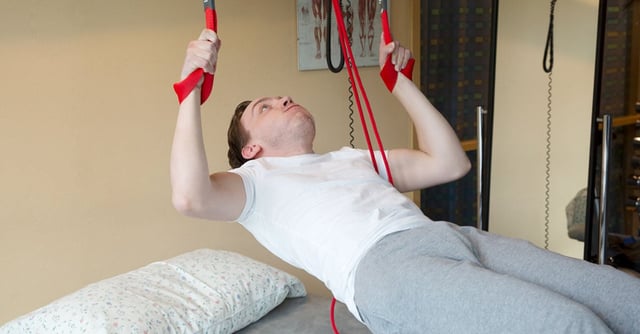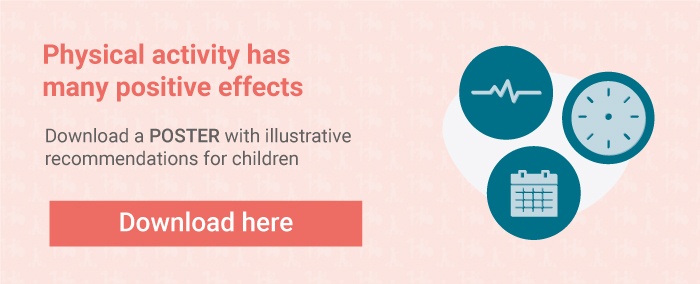
Nov 17, 2022How physical activity affects learning?

Back to Blog Overview
Many people ask if there is an association between physical activity and cognition? And we can clearly say “YES”. Several studies have proven that physical activity affect learning in all age groups. Exercise optimize your alertness, attention and motivation and it help logging new information.
- What is defined as physical activity?
- What are the recommendations for physical activity for people with disabilities?
- What are the benefits of physical activity?
- How does physical activity affect learning?
- Does the benefits of physical activity also apply to people with disabilities?
- What type of physical activities can be adapted for people with disabilities?
What is defined as physical activity?

Physical activity is defined by the World Health Organization (WHO) as «any bodily movement produced by skeletal muscles that requires energy expenditure. It refers to all movement including leisure time, for transport to get to and from places, or as part of a person’s work»
Examples of physical activity is: walking to school/work, taking the stairs, swimming, bike cycling, jumping on the trampoline, playing at the park, horseback riding, race running, wheeling oneself in wheelchair etc.
What are the recommendations for physical activity for people with disabilities?
WHO have made detailed guidelines and recommendations for physical activities for good health.
Here you can see the recommendations for people with disabilities, which are the same as for people in this age group without a disability:
Children and adolescents (aged 5-17 years)
- At least 60 minutes of physical activity a day, moderate- to vigorous intensity (3-6 MET)
- At least 3 days a week, vigorous-intensity aerobic activities and strengthening of muscle and bone (3-10 MET)
- Limit the amount of time spent being sedentary
Adults (aged 18 years and older)
- At least 150-300 minutes a week, moderate-intensity aerobic physical activity (3-6 MET)
or
- At least 75-150 minutes a week, vigorous-intensity aerobic physical activity (3-10 MET)
- At least 2 days a week, strengthen muscle and bone
- Limit the amount of time spent being sedentary
WHO also emphasize the fact that doing some physical activity is better than doing none. This means if you have a severe disability, doing some exercise does have impact on your general health.
What are the benefits of physical activity?
First of all it is important to know that physical activity is a unique health promoting measurement! Even small amounts of activity, replacing sedentary behaviour, have effects on our overall health.
A growing amount of research have proven that physical activity have positive effects on:
- Muscular and cardiorespiratory fitness
- Cardiometabolic health
- Bone health
- Cognitive function
- Mental health
- Obesity
It is also important to be aware of that physical active promotes normal growth and development in children and young people, as well as it has positive effect on learning.
How does physical activity affect learning?
Physical activity is food for the brain! When we are physically active, all parts of the brain is affected and it improves your ability to:
- Concentrate
- Pay attention
- Plan and execute tasks
- Remember what you learned
- Be creative
In addition it affects your overall mood!
Today we also know what is happening on a molecular level in the brain when we are physically active. “Molecular level” means that scientists are closely examining what is happening in the brain cells.
When we are physically active, the blood circulation increases in the whole body, also in the brain. Blood transports oxygen, and just by standing up from sitting, the amount of oxygen to our brain cells increases by 10%. More oxygen to the brain cells accelerate a chemical reaction, developing chemical substances that have a protective and stimulating effect on our nerve cells. It is like supplying the brain with fertilizer. And this supplement have important effects on cells.
Physical activity contributes to:
- improves the communication between nerve cells
- makes the nerve cells more robust
- increases the formation of new nerve cells
All these factors play an important role in brain health and our ability to learn.
Do the benefits of physical activity also apply to people with disabilities?
YES, absolutely! Research have shown that people with disabilities are less physically active compared to typically developing people. And with increased severity, time spent being sedentary also increases. All people, also people with a disability benefit from physical activity and decreasing their time being sedentary.

When it comes to the relationship between dose of physical activity and health benefits, the good news is that there is no lower threshold for benefits, and the greatest benefits are seen at the lower end of the dose-response curve. Meaning, if you become a little more physically active, you will have health and fitness benefits.
Some physical activity is better than none!
What type of activities can be adapted for people with disabilities?
With the knowledge “Doing some exercise is better than doing none”, challenge yourself and your carers to be creative on how to integrate physical activity during everyday life.
/Innowalk_Which-product-suits-my-child.jpg?width=800&height=419&name=Innowalk_Which-product-suits-my-child.jpg)
What about looking into your daily routines and how you can adapt and integrate more activity? You can use some of the questions below for discussion and then make a plan to be more active and improve your health.
1. What types of activities/sports/training do I like?
Example:
- Swimming
- Horseback riding
- Race running
- Wheelchair sports
- Bike cycling
- Skiing
2. What types of activities/sports/training are available in my area?
3. What activities can be integrated into everyday life?
Example:
- Standing upright in a static standing device
- Dynamic standing in the Innowalk/Innowalk Pro
- Walking in my gait trainer
4. How can I be actively involved in daily activities where I’m using my body?
Example:
- Transfers
- Dressing/undressing
- Play activities
Resources:
- WHO guidelines on physical activity and sedentary behaviour.
- Notes from presentation of physical activity guidelines May 9th 2022.
- A Quantitative Review of Physical Activity, Health, and Learning Outcomes Associated With Classroom-Based Physical Activity Interventions.
- Motor-learning based activities may improve functional ability in adults with severe cerebral palsy: A controlled pilot study.

Rikke Damkjær Moen brings many years of experience as clinical physiotherapist to the Made for Movement team. Her mission is to ensure that everybody, regardless of mobility problems, should be able to experience the joy and health benefits of physical activity. As our Medical Manager, Rikke is passionate about sharing knowledge so that individuals with special needs, families, and clinicians can discover the possibilities and solutions provided by Made for Movement.


